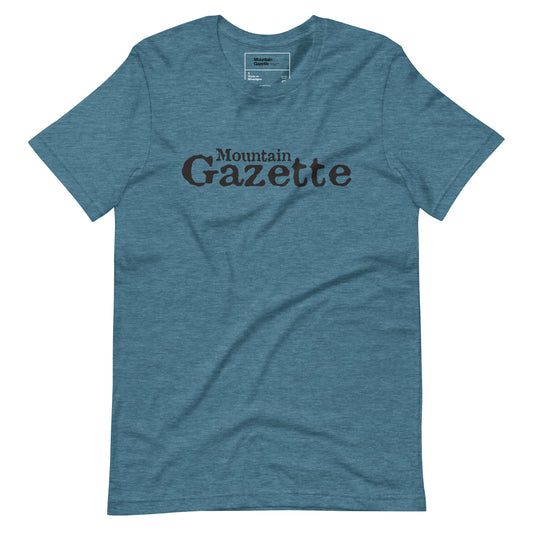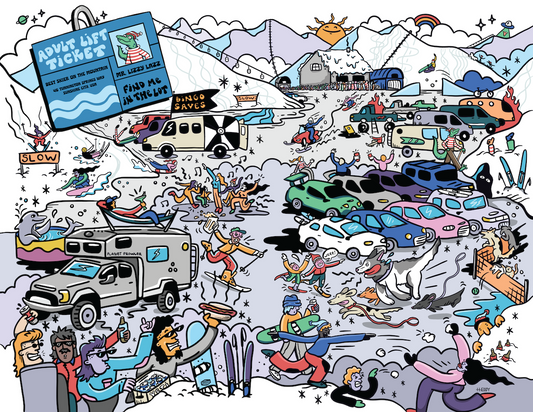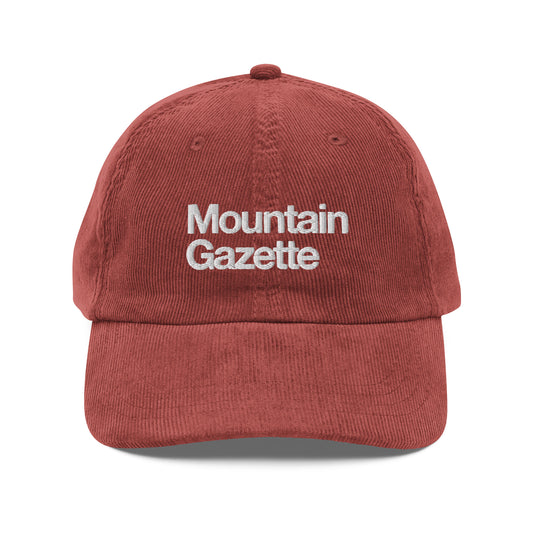
Originally published in the weekly Here & There newsletter by Kyle Frost. Subscribe here.
The big bad wolf
Over the last few weeks, 10 wolves were released in Colorado – the culmination of years of protracted debate about wolves, ecosystems, and the role of voters in ecological legislation. It’s a story of urban/rural divides, “ballot box biology,” restoring nature, and perhaps at its core a lack of understanding about how “wild” our wildlife really is.
How did we get here?
Proposition 114 passed by voters with a 51/49 margin in 2019, tasks Colorado Parks and Wildlife (CPW) with reintroducing and managing gray wolves. It also includes provisions for ongoing management, feedback, and payouts to livestock owners for any losses due to wolf predation.
An urban and rural divide
Because this decision was left to the voters, an entire voting block is now held responsible for any perceived negative impacts instead of more qualified experts. Many rural Colorado voters have the perception that Front Range liberals in an “ivory tower” are voting on policies that won’t affect them. Regardless of your feelings about the legislation itself, it seems an accurate criticism. The result of these decisions (acceptable or not) isn’t borne out proportionally to voters.
Boulder and Denver were expectedly the most in favor with a ~67/33 split, but the rest of the Front Range was remarkably close to 50/50. However, 39% of non Front Range voters were still in favor of re-introduction, illustrating some bifurcation of opinion, even in rural areas where majority sentiment opposed forced reintroduction.
Concerns about wolves, wildlife, and livestock
Detractors express concerns that wolves will have a detrimental effect on ungulates (mule deer, elk, moose, bighorn sheep) and livestock in Colorado. Wolves can put pressure on these populations, but the introduction of another predator species is unlikely to have a significant impact. A 2013 study indicated that “that wolves and all carnivore species combined had additive effects on baseline elk mortality, but only reduced survival by < 2% .”
Based on Colorado State University's Center of Human-Carnivore Coexistence data, there was no overall decline in post-hunt elk populations in states where wolves were reintroduced between 1995 and 2018.

However, in regions where wolves have seen the highest growth, some ungulate herds do fall under population objectives. The study notes that this is partially due to wolf predation, but also habitat loss due to climate change and additional human pressures in those areas.
Another concern is the effect on livestock. Wolves will kill livestock, this is inevitable. And while this may be a side effect that supporters can accept in order to encourage a more healthy ecosystem, telling rural residents that “the wolves were here first” or to “just deal with it” only encourages a geographical divide. Prop 114 does provision for the compensation of livestock killed by wolves, but it can be a difficult bureaucratic process to actually process those claims. And when it’s your livelihood, time, and effort on the line, there’s an impact that should be recognized and treated with respect.
Wolves aren't an ecological panacea
Supporters of reintroduction should note that the forced addition of wolves into Colorado habitats won’t magically result in perfect ecosystems. Despite the popularity of highly romanticized “How wolves change rivers” – the core thesis of which has been contested by some ecologists – wolves won’t solve all the pressures affecting wildlife in Colorado.
In some ways, the debates about wolves (both for and against) are just a distraction from one of the primary ecological pressures in Colorado – us.
A 2022 analysis indicated that 40% of the most critical elk habitats in Colorado are already affected by recreational trail use (Theodore Roosevelt Conservation Partnership, 2022). Elk avoid hikers, mountain bike riders, and ATVs, by staying about 1,795, 2,172, and 2,884 away respectively (McCorquodale, 2013). These “avoidance areas” encompass a huge amount of land, and negatively impact critical winter habitats, migration corridors, and elk calf survival.

Our wildlife isn't "wild"
I think there’s a misconception from some that we’ll continue to release wolves and they will “go forth and multiply”. The reality is that nearly every population in our wilderness (especially game and predator species) is carefully monitored and managed. If you need any indication, try reading through the plethora of species specific plans that span the wildlife management regions in Colorado.
While inevitably unpopular, there is a chance that the wolf population one day has such a deleterious effect on ungulate populations that CPW will authorize culling.
Our wildlife is not truly “wild”. It’s carefully planned and managed as necessary to balance species growth, health, interactions with humans, and impacts to agriculture. Ecological success stories in the 21st century are products of cautious science and meticulous management – and human predation is a part of that calculation.
I spoke to Alex Erwin, author of a recent study conducted on the effects of hunting on mountain lion populations. Conducted over 10 years, they found that hunting lions at currently allowed levels had a deleterious effect on genetic diversity of the lion population. Their findings led to suggestions for more experimentation-driven management policies, including using source-sink strategies (rotating hunting zones).
Erwin suggests that agencies should be baking in significantly more scientific experimentation into wildlife management. Decisions are sometimes based on nuisance animal complaints, human interactions, or the harvest success percentages from the year before rather than rigorous and constant experimentation data.
States have broad leeway to experiment but often end up using a wide variety of complicated research to obfuscate what is in the end, a judgment call. Erwin emphasized that “These are complicated questions to answer. There is so much that even we [researchers] don’t know about predator management, and at the end of the day much of it still boils down to value-based judgements – what do “we” want “nature” to look like?”
Wrapping up
While inevitably unpopular, there is a chance that the wolf population one day has such a deleterious effect on ungulate populations that CPW will authorize culling.
Our wildlife is not truly “wild”. It’s carefully planned and managed as necessary to balance species growth, health, interactions with humans, and impacts to agriculture. Ecological success stories in the 21st century are products of cautious science and meticulous management – and human predation is a part of that calculation.
I spoke to Alex Erwin, author of a recent study conducted on the effects of hunting on mountain lion populations. Conducted over 10 years, they found that hunting lions at currently allowed levels had a deleterious effect on genetic diversity of the lion population. Their findings led to suggestions for more experimentation-driven management policies, including using source-sink strategies (rotating hunting zones).
Erwin suggests that agencies should be baking in significantly more scientific experimentation into wildlife management. Decisions are sometimes based on nuisance animal complaints, human interactions, or the harvest success percentages from the year before rather than rigorous and constant experimentation data.
States have broad leeway to experiment but often end up using a wide variety of complicated research to obfuscate what is in the end, a judgment call. Erwin emphasized that “These are complicated questions to answer. There is so much that even we [researchers] don’t know about predator management, and at the end of the day much of it still boils down to value-based judgements – what do “we” want “nature” to look like?”
Wrapping up
The wolves are here, and there will be evaluations to how they’ve adapted in Colorado. Those evaluations will consider population growth, effects on prey animals, and interactions with human development.
And just recently, a new “ballot box biology” initiative has emerged seeking to ban all hunting of mountain lions, lynx, and bobcats in Colorado. Initially titled “Ban Trophy Hunting”, this inflammatory positioning was rejected by the Colorado Title Board. If it reaches the ballot in 2024, it will be yet another test of whether we think these kinds of decisions should be left up to voters. Says Erwin, “I wouldn’t be surprised if our research is used on both sides of the debate – that just shows how complicated these topics are.”
Thanks for stopping by. If you've got comments, feedback, or suggestions for a future newsletter you can reply to this email or get in touch directly at kyle.frost@mountaingazette.com.














